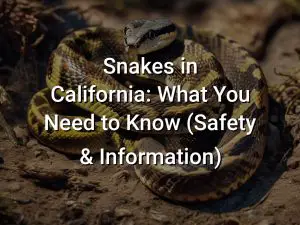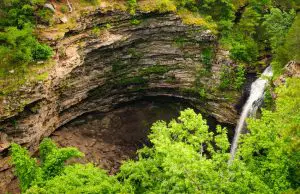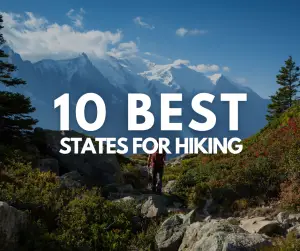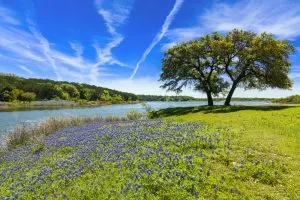Is Yellowstone National Park Safe? (2023)
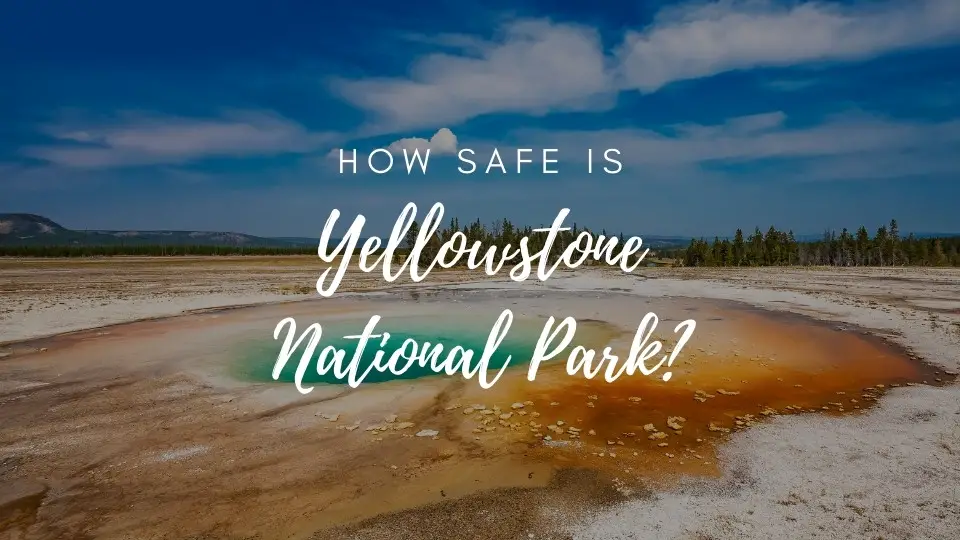
Yellowstone National Park is located in Wyoming, Montana, and Idaho and is known for its geothermal features, wildlife, and hiking trails. Every year, millions of people visit Yellowstone National Park to experience its natural beauty.
Is Yellowstone National Park safe? Yes, Yellowstone National Park is safe. While there are some risks associated with hiking and being in the wilderness, these risks can be minimized by following some simple safety guidelines. In this blog post, we will address some of the concerns and safety risks of Yellowstone National Park.
Quick Links
What Are The Biggest Dangers At Yellowstone National Park?
Yellowstone National Park is one of the most popular national parks in the United States. Located in Wyoming, Montana, and Idaho, it is home to a variety of landscapes, including forests, meadows, rivers, and geysers. It is also home to a variety of wildlife, including bison, elk, bears, and wolves.
With so much to see and do, it’s no wonder that Yellowstone National Park is a popular destination for hikers and outdoor lovers. However, there are a few things to keep in mind when visiting the park, as there are some dangers present. In the following sections, we will cover the biggest dangers at Yellowstone National Park in more detail.
Is Yellowstone National Park Safe At Night?
When it comes to hiking and spending time in parks at night, there are a few general safety precautions to take. Low visibility is one issue, as it can be more difficult to see where you are going and what obstacles are in your path. Additionally, more wildlife is active at night, so you may come across some animals you wouldn’t encounter during the day.
There are also some specific dangers to be aware of when exploring Yellowstone National Park at night. For example, bears are more active at night, so you’ll want to take extra care to avoid encountering one. Additionally, the geysers and other hot springs in the park can be more dangerous at night as it’s harder to see them. Here are a few tips for staying safe while exploring Yellowstone National Park at night:
- Use a flashlight or headlamp to help you see where you’re going.
- Make noise as you hike so you don’t startle any animals.
- Stay on designated trails and boardwalks.
- Be aware of your surroundings and pay attention to any changes in the environment.
- Avoid geysers and other hot springs.
Is It Safe To Go Alone To Yellowstone National Park?
Yellowstone National Park is a beautiful and popular destination for hikers, but it’s important to be aware of the risks before setting out on a solo hike. Generally speaking, it’s always safest to hike with a partner, but there are ways to make solo hikes safer. First, let someone know your itinerary and when you expect to return. Second, hike during the daytime and stay on well-traveled trails. And third, be aware of your surroundings and carry bear spray if you’re hiking in bear country.
While Yellowstone is a relatively safe place to hike, there are some specific safety concerns to be aware of. The park’s terrain is diverse, with everything from open meadows to dense forests, and it’s important to be prepared for changes in weather and terrain. Yellowstone is also home to a variety of wildlife, including bears, coyotes, and bison, so it’s important to know how to avoid dangerous encounters. If you’re planning a solo hike in Yellowstone, take the time to research the specific safety concerns and make sure you’re prepared before setting out.
Is It Safe To Drink Water In Yellowstone National Park?
There are a lot of different things to consider when you’re trying to figure out if it’s safe to drink water in Yellowstone National Park. The first thing you need to know is that there are a lot of different ways to purify water, and the best way to purify water is going to depend on the situation. If you’re hiking in the backcountry, you’re going to want to purify your water using a backpacking water filter. If you’re just camping in the front country, you can purify your water using a campfire or a camp stove.
The second thing you need to know is that there are a lot of different things that can contaminate water, and not all of them are going to be filtered out by a water filter. Some of the things that can contaminate water include bacteria, viruses, and parasites. These contaminants can cause serious illnesses and even death.
The best way to ensure that your water is safe to drink is to purify it first. There are a lot of different ways to purify water, and the best way to purify water is going to depend on the situation. If you’re hiking in the backcountry, you’re going to want to purify your water using a backpacking water filter. If you’re just camping in the front country, you can purify your water using a campfire or a camp stove.
The Wildlife Of Yellowstone National Park
Yellowstone National Park is home to some of the most wildlife in the United States. You can find bison, elk, deer, pronghorn, bighorn sheep, and many more. The most common wildlife you will encounter in Yellowstone are:
- Bison: These massive animals have often seen grazing in the meadows of Yellowstone. They are docile but can be dangerous if they feel threatened. If you see a bison, do not approach it, and give it plenty of space to continue on its way.
- Elk: These animals are often seen in the forests of Yellowstone. They are generally peaceful but can become aggressive during mating season. If you see an elk, give it a wide berth and do not approach it.
- Deer: These timid animals are often seen in the meadows of Yellowstone. They will generally run away if they see you but can pose a threat if they feel cornered. If you see a deer, give it plenty of space and do not approach it.
- Pronghorn: These fast animals are often seen in the open plains of Yellowstone. They are generally peaceful but can become aggressive if they feel threatened. If you see a pronghorn, give it plenty of space and do not approach it.
- Bighorn Sheep: These sure-footed animals are often seen in the mountains of Yellowstone. They are generally peaceful but can become aggressive if they feel threatened. If you see a bighorn sheep, give it plenty of space and do not approach it.
Hiking Safety Tips For Yellowstone National Park
The best ways to stay safe while hiking Yellowstone National Park are to be aware of your surroundings, hike with a partner, and be prepared for the unexpected.
When hiking in Yellowstone, be sure to pay attention to your surroundings. Look out for wildlife, and be prepared to encounter a bear. Be aware of your surroundings at all times, and if you see something suspicious, report it to a ranger.
Hiking with a partner is always a good idea. This way, you can watch out for each other and help each other if one of you gets into trouble. If you hike with a group, be sure to stay together and not wander off on your own.
No matter how prepared you are, there is always the possibility of the unexpected happening. Be sure to carry a first-aid kit with you and know how to use it. In case of an emergency, know how to reach for help. Familiarize yourself with the area before you hike, and always let someone know where you are going and when you expect to be back.
Conclusion
In conclusion, hiking and enjoying the beautiful scenery of Yellowstone National Park is safe, as long as you take a few simple precautions. Remember to stay on the designated trails, be careful of geysers, and don’t approach the wildlife. By following these guidelines, you’ll be able to have a safe and enjoyable experience in one of America’s most popular national parks.


